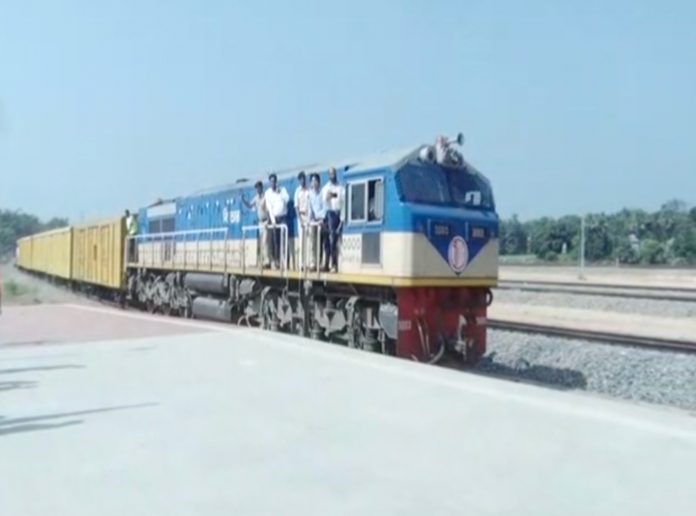In some good news, the trial run on the newly constructed rail line connecting Tripura’s Nischintapur with Bangladesh’s Gangasagar railway station was successfully completed today. As part of the trial run, a goods train from Gangasagar railway station arrived at Nischintapur Land Customs Station, that connects Tripura’s Agartala with Akhaura in Bangladesh by train.
A group of six people were in charge to oversee the train’s travel, the project’s executive engineer, Anindra Chowdhury told media. Chowdhury said that it might take a month or two to fix some technical problems with broad gauge connectivity and other issues to start running passenger trains on the line. Nischintapur serves as the end point of Tripura in the Agartala-Akhaura (Bangladesh) railway route.
Prime Minister Narendra Modi and his Bangladesh counterpart, Sheikh Hasina are expected to inaugurate the 12-kilometer Agartala-Akhaura railway line later this year. The project has been built at an estimated cost of Rs 860 crores.
Once the railway project is ready, the distance between Agartala and Dhaka will be reduced by one third to just 500 kilometers.
The Agartala-Akhaura railway project, which would link the eastern sections of Bangladesh with the northeastern region of India via rail, is being seen as a major development for Tripura as the state and the region is expected to gain a lot from the ambitious project in terms of trade and commerce. This railway project has generated significant excitement as it has the potential to be a game-changer for both India and Bangladesh by not only improving connectivity but also border trade, business, tourism and people-to-people relationship. It is expected to simplify the import and export of goods through Chittagong port, thereby fortifying the foreign trade and communication system of the region.
The construction of the Akhaura-Gangasagar-Agartala railway line began in July 2018. Originally slated for a one-and-a-half-year timeline, the project’s completion has been extended to five phases due to various factors, including the impact of the COVID-19 pandemic.





